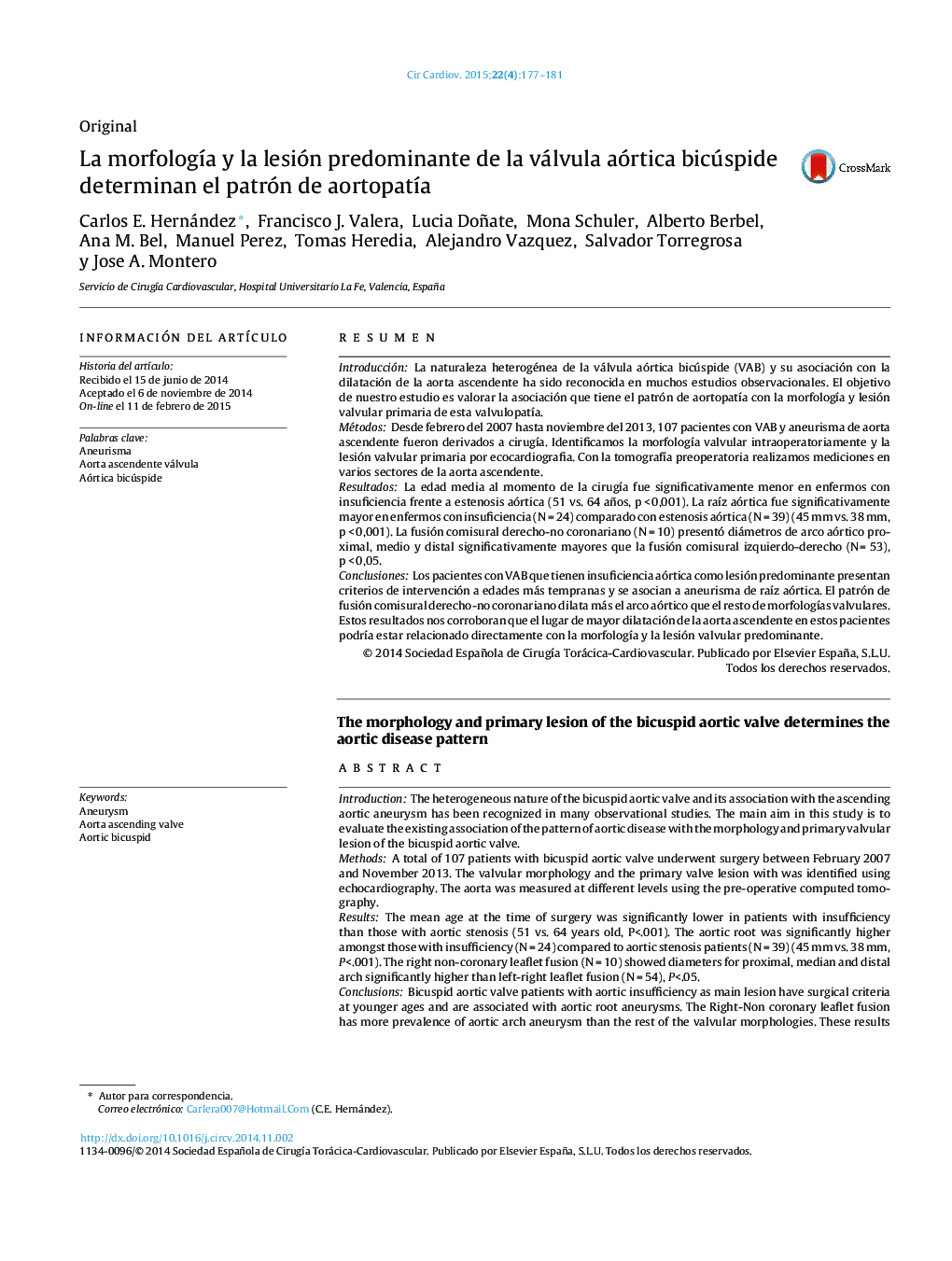| Article ID | Journal | Published Year | Pages | File Type |
|---|---|---|---|---|
| 2907551 | Cirugía Cardiovascular | 2015 | 5 Pages |
ResumenIntroducciónLa naturaleza heterogénea de la válvula aórtica bicúspide (VAB) y su asociación con la dilatación de la aorta ascendente ha sido reconocida en muchos estudios observacionales. El objetivo de nuestro estudio es valorar la asociación que tiene el patrón de aortopatía con la morfología y lesión valvular primaria de esta valvulopatía.MétodosDesde febrero del 2007 hasta noviembre del 2013, 107 pacientes con VAB y aneurisma de aorta ascendente fueron derivados a cirugía. Identificamos la morfología valvular intraoperatoriamente y la lesión valvular primaria por ecocardiografia. Con la tomografía preoperatoria realizamos mediciones en varios sectores de la aorta ascendente.ResultadosLa edad media al momento de la cirugía fue significativamente menor en enfermos con insuficiencia frente a estenosis aórtica (51 vs. 64 años, p < 0,001). La raíz aórtica fue significativamente mayor en enfermos con insuficiencia (N = 24) comparado con estenosis aórtica (N = 39) (45 mm vs. 38 mm, p < 0,001). La fusión comisural derecho-no coronariano (N = 10) presentó diámetros de arco aórtico proximal, medio y distal significativamente mayores que la fusión comisural izquierdo-derecho (N= 53), p < 0,05.ConclusionesLos pacientes con VAB que tienen insuficiencia aórtica como lesión predominante presentan criterios de intervención a edades más tempranas y se asocian a aneurisma de raíz aórtica. El patrón de fusión comisural derecho-no coronariano dilata más el arco aórtico que el resto de morfologías valvulares. Estos resultados nos corroboran que el lugar de mayor dilatación de la aorta ascendente en estos pacientes podría estar relacionado directamente con la morfología y la lesión valvular predominante.
IntroductionThe heterogeneous nature of the bicuspid aortic valve and its association with the ascending aortic aneurysm has been recognized in many observational studies. The main aim in this study is to evaluate the existing association of the pattern of aortic disease with the morphology and primary valvular lesion of the bicuspid aortic valve.MethodsA total of 107 patients with bicuspid aortic valve underwent surgery between February 2007 and November 2013. The valvular morphology and the primary valve lesion with was identified using echocardiography. The aorta was measured at different levels using the pre-operative computed tomography.ResultsThe mean age at the time of surgery was significantly lower in patients with insufficiency than those with aortic stenosis (51 vs. 64 years old, P<.001). The aortic root was significantly higher amongst those with insufficiency (N = 24) compared to aortic stenosis patients (N = 39) (45 mm vs. 38 mm, P<.001). The right non-coronary leaflet fusion (N = 10) showed diameters for proximal, median and distal arch significantly higher than left-right leaflet fusion (N = 54), P<.05.ConclusionsBicuspid aortic valve patients with aortic insufficiency as main lesion have surgical criteria at younger ages and are associated with aortic root aneurysms. The Right-Non coronary leaflet fusion has more prevalence of aortic arch aneurysm than the rest of the valvular morphologies. These results corroborate that in patients with bicuspid aortic valve, the area of aortic aneurysm can be linked directly with the morphology and the predominant valve lesion.
